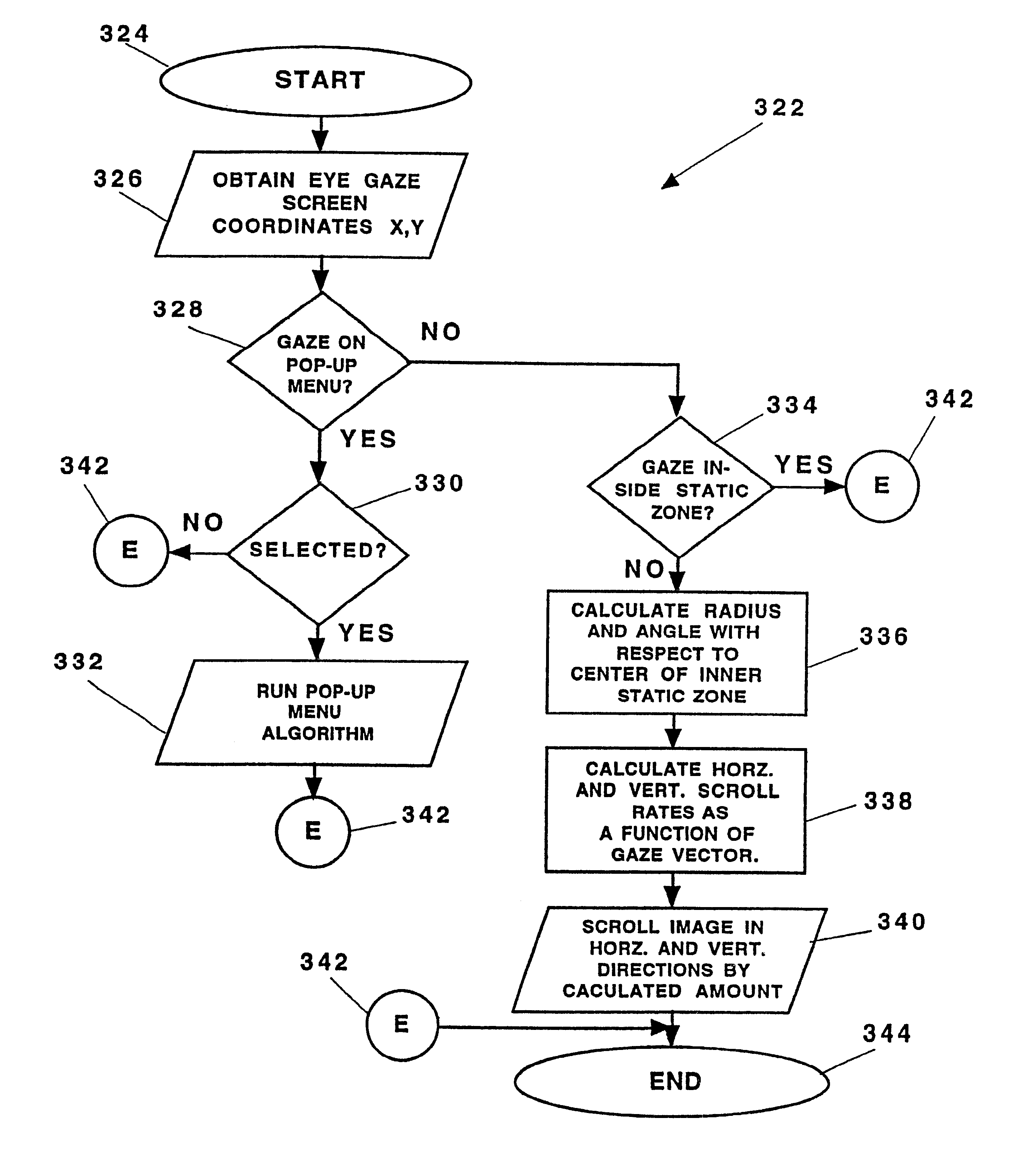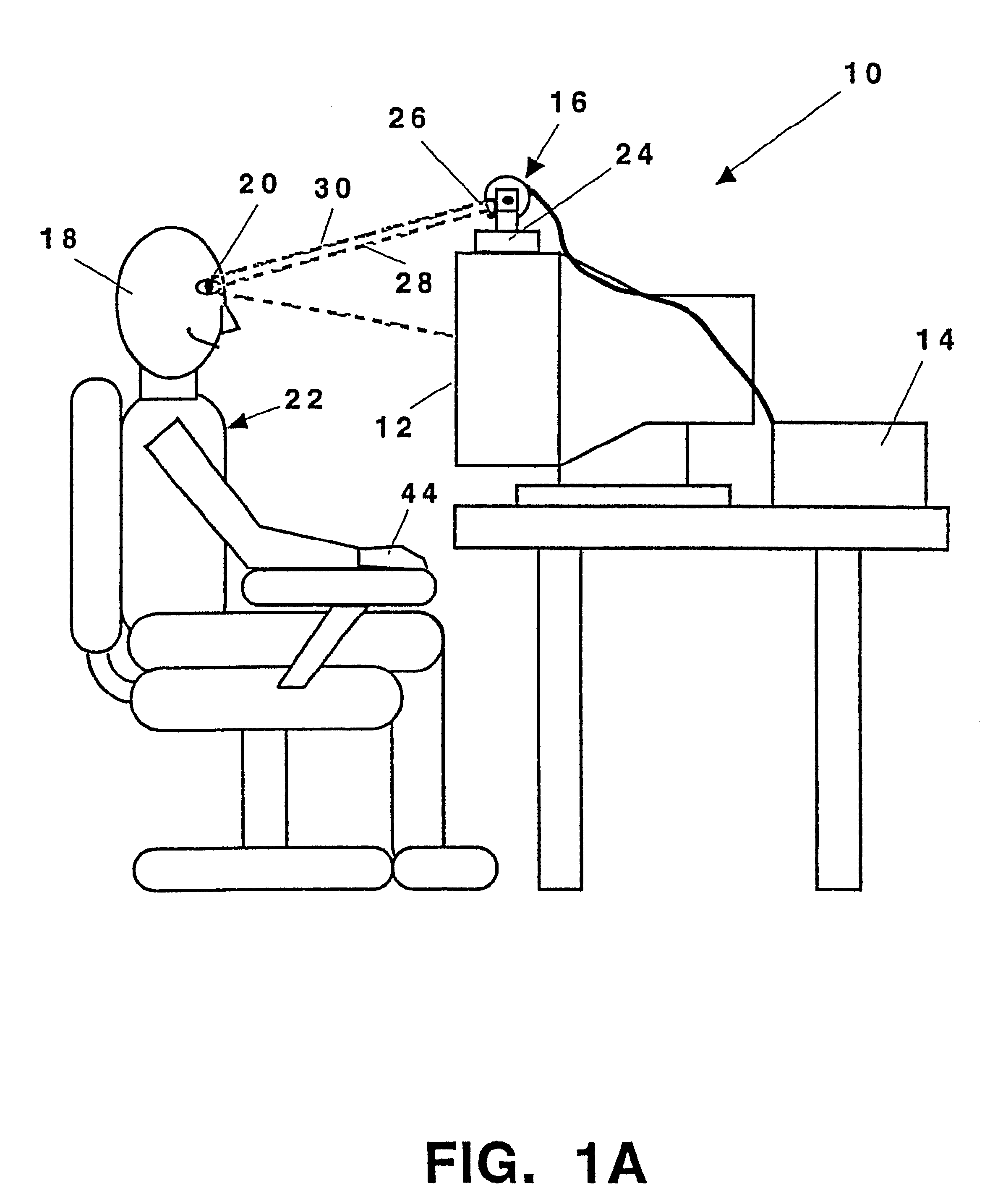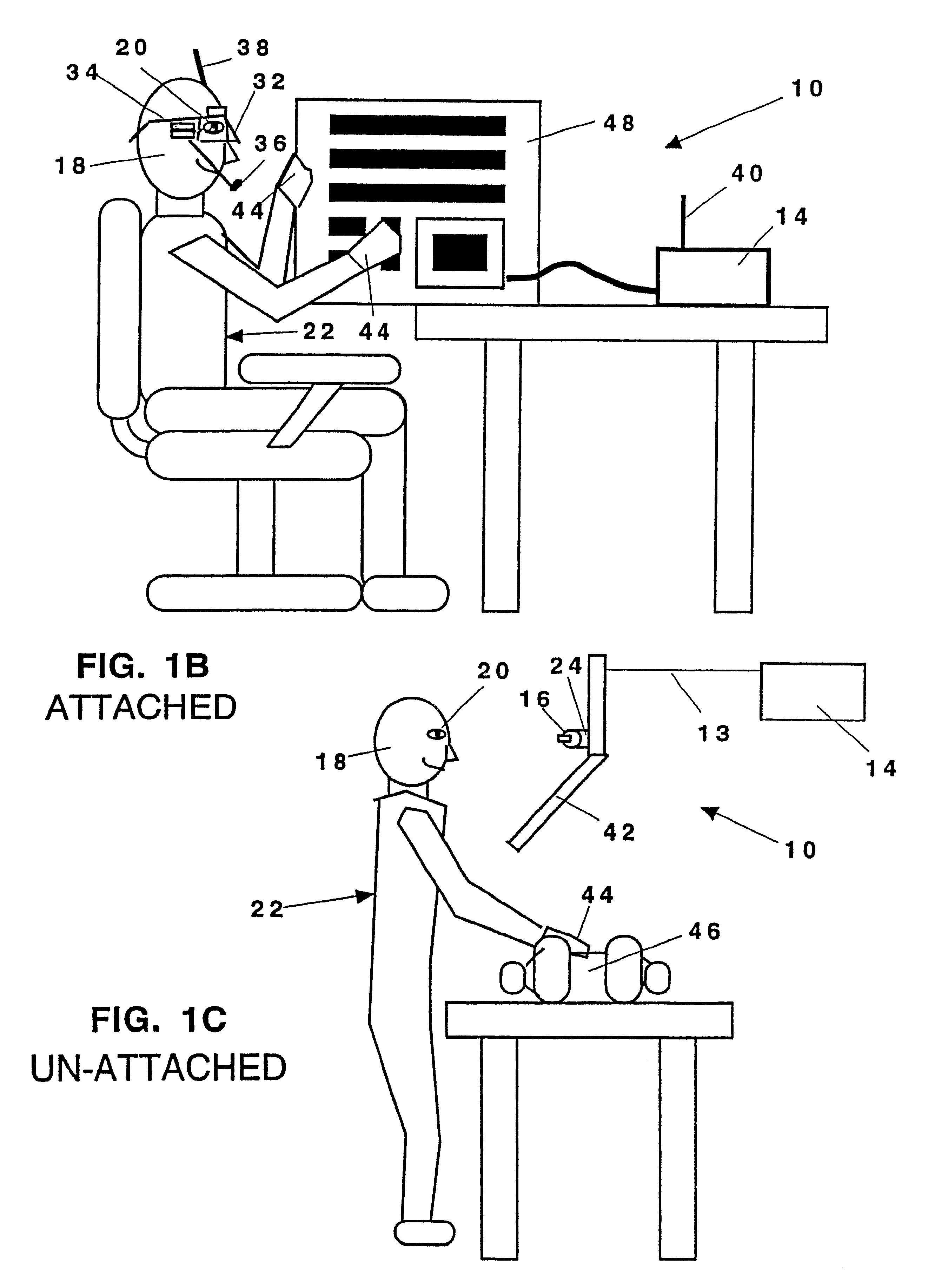System and methods for controlling automatic scrolling of information on a display screen
a display screen and information technology, applied in the field of system and methods for controlling automatic scrolling of information on the display screen, can solve the problems of requiring the use of a hand in order to be controlled, and revealing disadvantages
- Summary
- Abstract
- Description
- Claims
- Application Information
AI Technical Summary
Benefits of technology
Problems solved by technology
Method used
Image
Examples
Embodiment Construction
of a Specific Automatic Scrolling System
A. General Hardware for a Gimbaled Sensor System Screen Gaze Coordination for Automatic Scrolling System
FIG. 3B shows a specific automatic scrolling system hardware 10 used for eye and head tracking that includes the use of a gimbaled sensor system 16 and pan / tilt servos represented at block 171 (i.e. pan and tilt servos 94 and 98 shown in FIG. 3C) that move the sensor(s) 15 that are components for the gimbaled sensor system 16. The computer system 14 is shown interfaced with the display system 52 (i.e. display system 12, 32, or 42), and the display system 52 is in front of the user(s) 22. A LAN or WAN 51 is also shown connected to computer system 14 for access to information on the internet. The gimbaled sensor system 16 tracks the head and eye movements of the user 22 and provides the advantage of the user 22 not having to wear or attach anything to him / herself. The overall human machine interface system 10 is able to track the movement of t...
PUM
 Login to View More
Login to View More Abstract
Description
Claims
Application Information
 Login to View More
Login to View More - R&D
- Intellectual Property
- Life Sciences
- Materials
- Tech Scout
- Unparalleled Data Quality
- Higher Quality Content
- 60% Fewer Hallucinations
Browse by: Latest US Patents, China's latest patents, Technical Efficacy Thesaurus, Application Domain, Technology Topic, Popular Technical Reports.
© 2025 PatSnap. All rights reserved.Legal|Privacy policy|Modern Slavery Act Transparency Statement|Sitemap|About US| Contact US: help@patsnap.com



